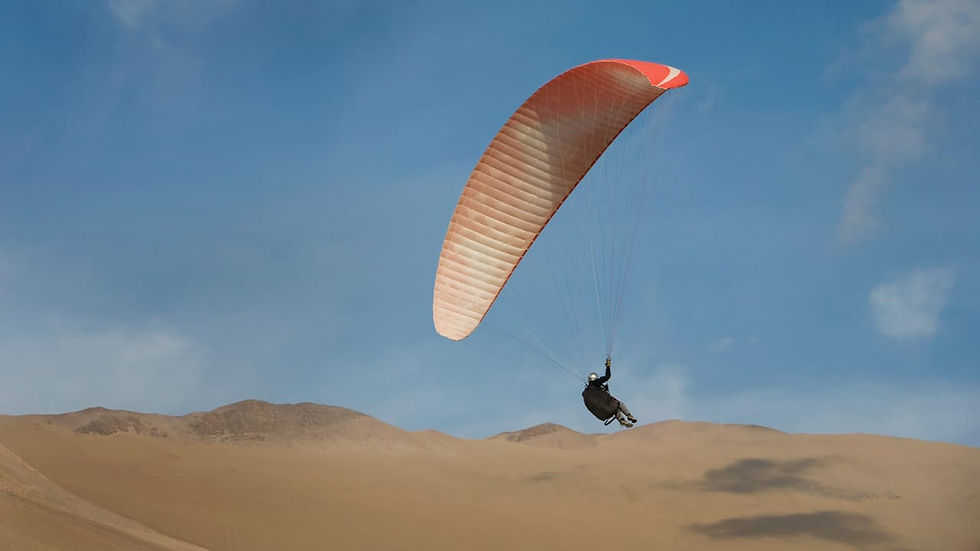Understanding Katabatic Flow: Essential for Paragliders
- Umesh

- Mar 22, 2024
- 2 min read
Katabatic flow, known as fall winds, is a meteorological process that takes place when air descends a slope under the influence of gravitational power. It is most prevalent in places with mountains; especially, it reaches its highest levels at night when the air over the ground becomes cooler as it loses warmth to the climate.
When the adjacent air gets cooler due to the influence on the slope, it becomes heavier than the nearby air. That density distinction generates a downward flow, and the phenomenon is known as katabatic flow.
Table of contents:

Importance of Katabatic Flow to Paragliders
In conclusion, katabatic flow is vital to paragliders and can have a profound impact on their activities. Paragliders rely on the lift generated by the wind to fly. Therefore, they should have comprehensive knowledge of katabatic flow and its patterns to enable them to take advantage while in the air.
When paragliders are in an area with strong katabatic winds, they are guaranteed to find vast altitudes that can support their time in the air. However, in areas without the winds, katabatic become a limitation since they can hardly float.
Identifying Katabatic Flow
Spotting katabatic flow is essential for paragliders. The following are the common signs to look out for:
Observing downdrafts near slopes: Sensors showing a moderate downdraft adjacent to the slope is a common sign that katabatic flow is imminent
Challenging takeoffs: Paragliders from slopes with strong katabatic flow experience challenging air takeoffs, especially in the morning when winds are intense
Indicators of wind direction: A katabatic flow is often accompanied by an accumulation of smoke, dust, or movement of trees.
FAQs
1. What produces katabatic flow?
The cooling of the breezy air close to the slope produces density that descends to flow downhill.
2. Why is katabatic flow more prevalent during the night?
The cooling of the ground releases heat to the atmosphere in proximity to the slope, encouraging a density difference that is released to lead to a more vigorous katabatic flow.
3. How do paragliders take advantage of katabatic flow?
This flow of cool air can help the paraglider to lift and remain airborne for some more time.
4. What are the potential risks for paragliders due to katabatic flow?
Paraglider pilots should be wary of weak or rough katabatic flows, which can interfere with their ability to remain aloft and increase the possibility of accidents.
5. How can paragliders avoid danger while flying in areas influenced by katabatic flow?
Weather conditions should be carefully examined by aviators, ascertaining relevant wind speeds and directions over particular regions of flight affected by katabatic winds, during which it will be advisable that they employ the right flying techniques.
Conclusion
In paragliding, understanding katabatic flow is very essential as it guarantees safety and success. Paragliders must recognize the signs of a katabatic flow and be able to use the wind to improve their flying skills, extend their flight hours, and minimize the possibility of an accident.
It is important for one to always have in mind that without proper safety precautions and making sound decisions while paragliding an enjoyable and satisfying experience may turn out into a nightmare.





Comments